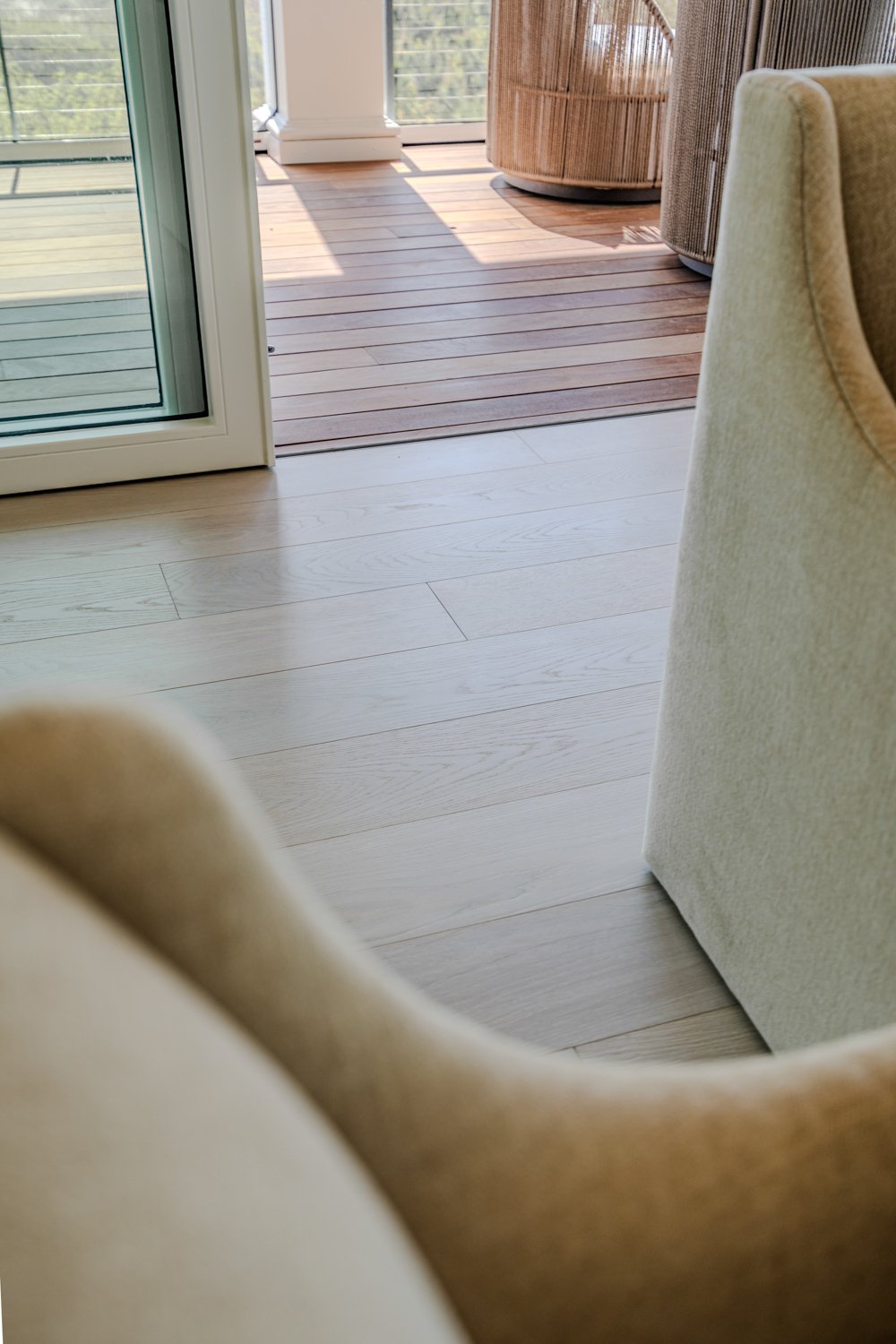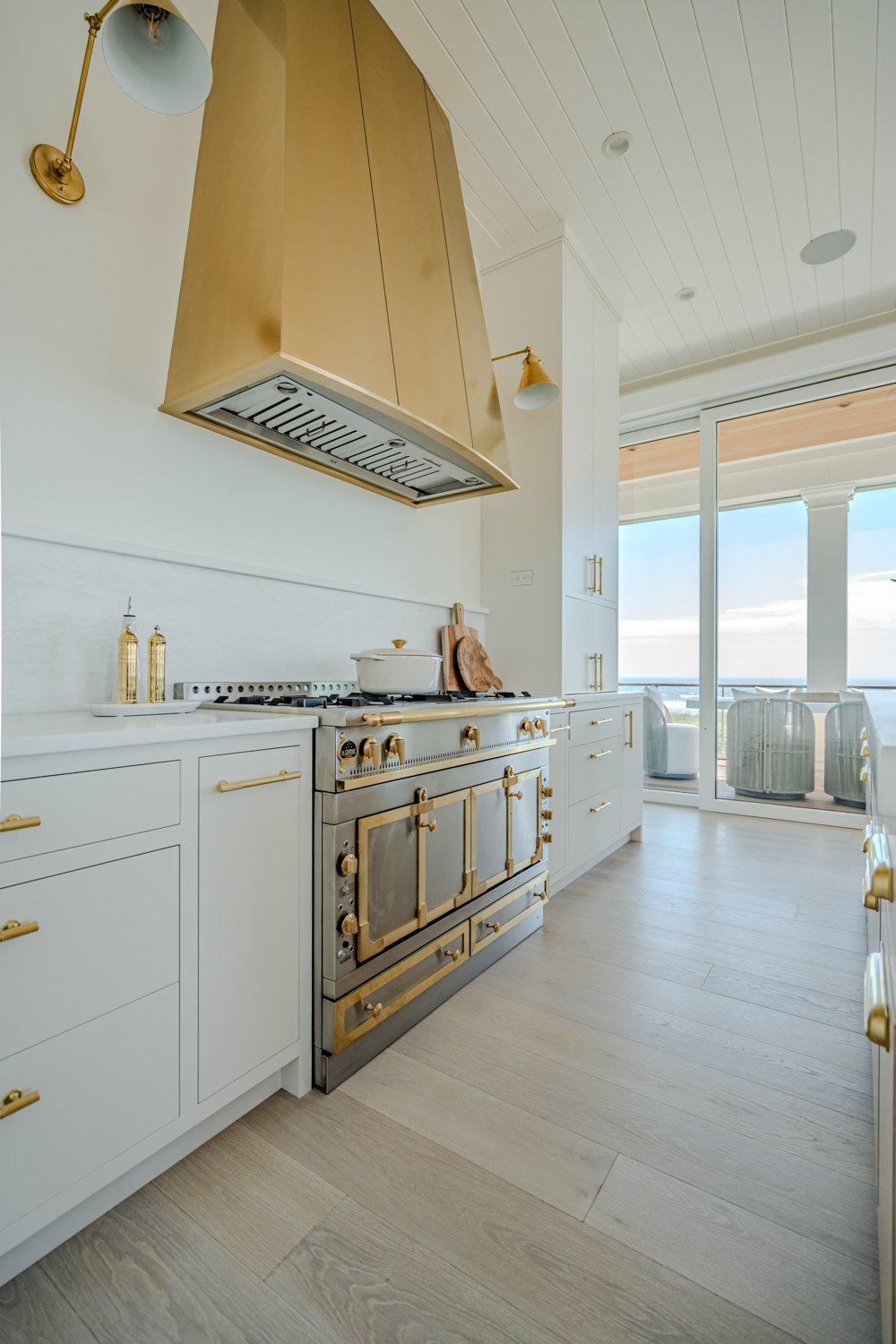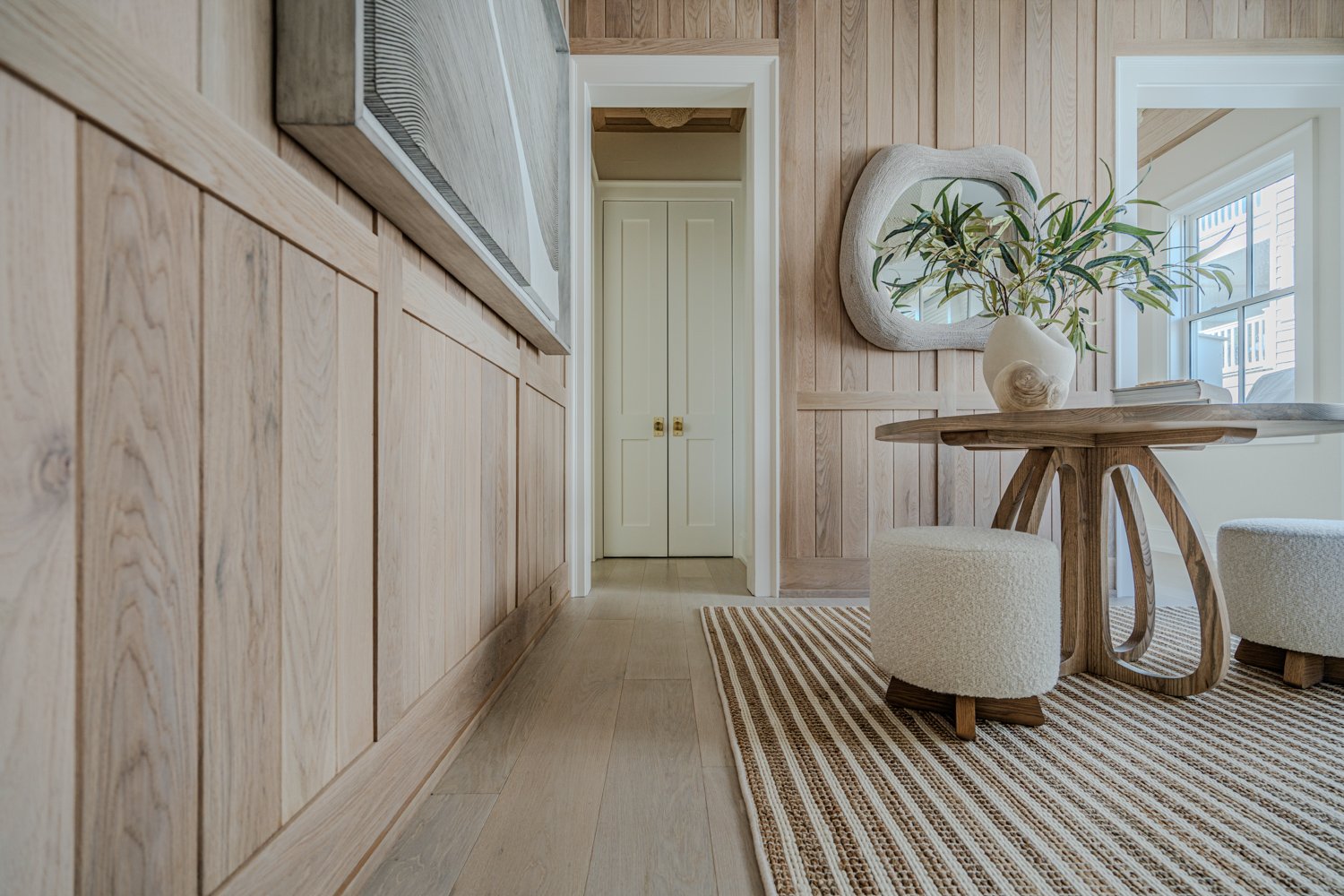FLOORING SUSTAINABILITY SUMMIT PROJECT DESIGN AWARD PROGRAM
Link Copied


PID Floors was thrilled to submit our incredible Stone Harbor, New Jersey beach house project to The Flooring Sustainability Summit Project Design Award Program. This design award program recognizes outstanding residential and commercial projects that showcase innovative, sustainable flooring solutions while celebrating cutting-edge design.
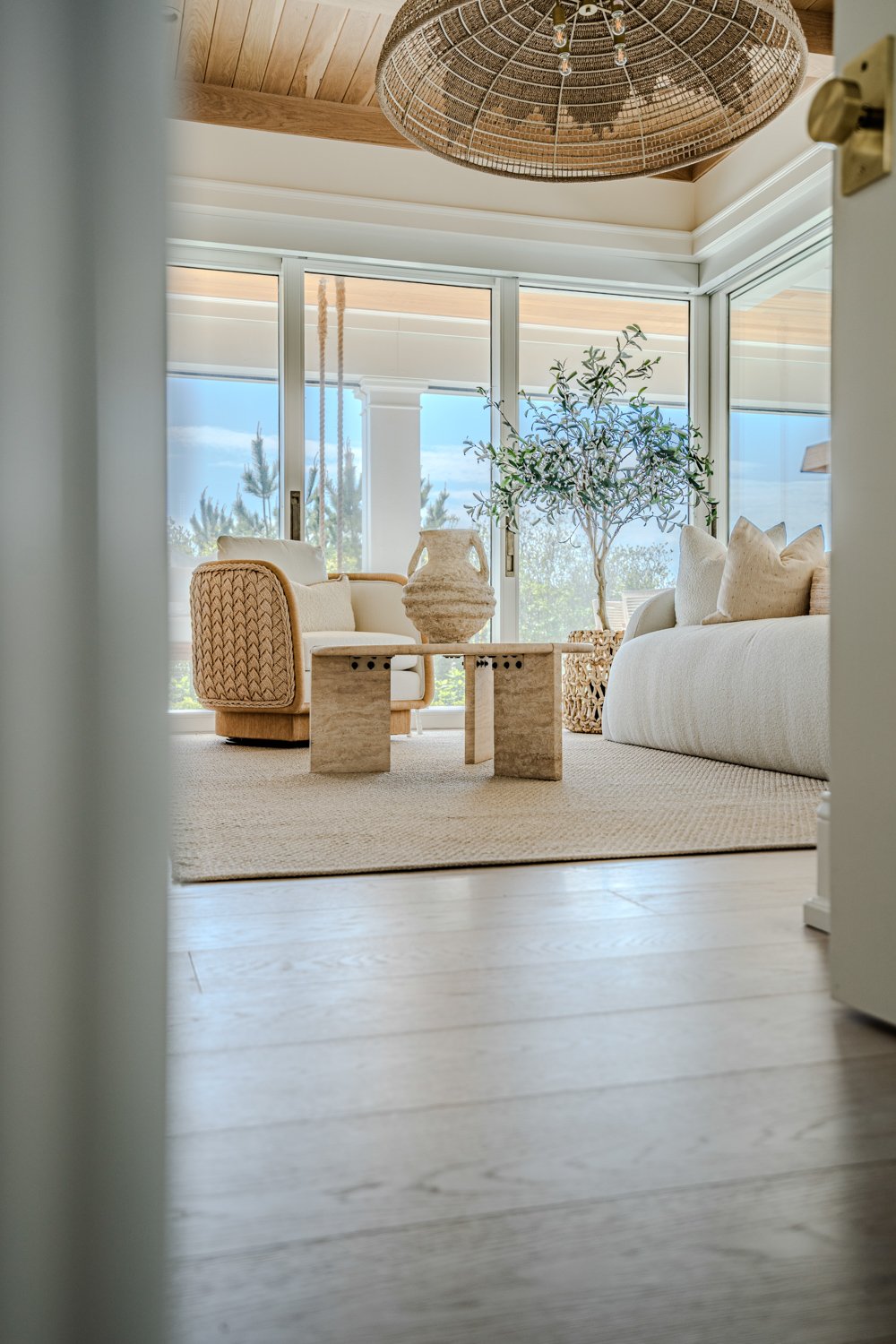
1) Use of reused, recycled, and/or recyclable flooring materials;
Our inLove Collection wood flooring production is a zero-waste operation. The sawdust and other byproducts of milling lumber into flooring planks get used as pellets for heating and powering the production facility, ensuring that resource efficiency is maximized. Our inLove Collection finishing is done by hand, eliminating extra use of energy from either fossil fuels or renewable sources. The three-layer construction of this particular flooring also uses fewer adhesives than a floor with a plywood multi-layer core, giving creations like the inLove Stone Harbor, New Jersey project flooring, called FOREST HILLS, a sturdy, yet effective build.
The 5mm wear layer lets the product have a service life that far exceeds other flooring products, wood or otherwise, if a homeowner chooses to refinish their floors every 15-20 years. This means that the inLove floors will last more than 100 years with adequate care. This flooring can be periodically refinished to a different color, adding a unique dimension of reusability (not to mention style!), which is an often-forgotten part of the “reduce, reuse, recycle” mantra.
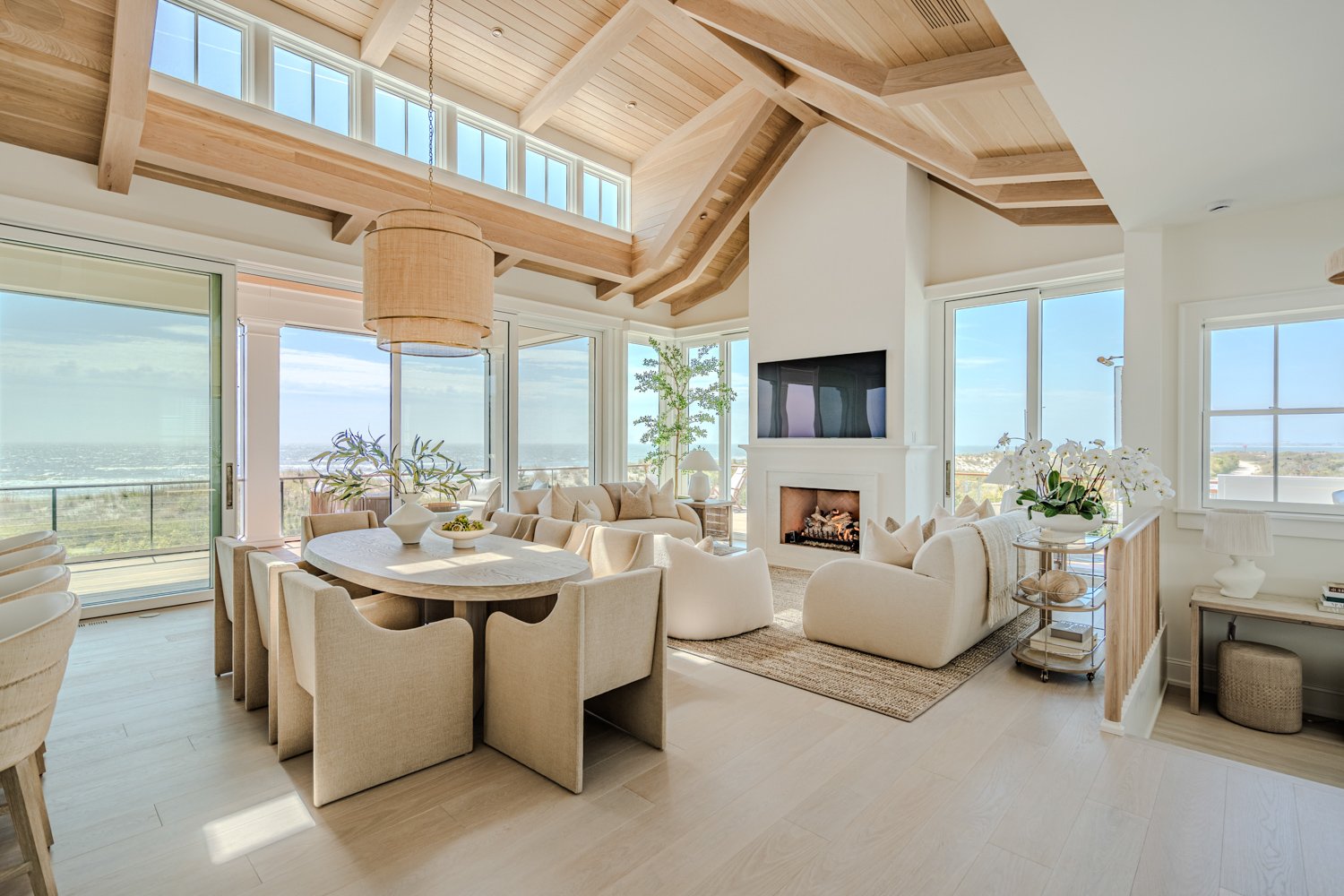
Human Health
1) Transparent reporting of flooring ingredients;
2) Optimized mitigation of chemicals of concern in flooring;
3) VOCs: use of flooring systems that are low in or inherently free of VOCs;
4) Other human health attributes relevant to flooring
The flooring of this Stone Harbor, New Jersey beach house project adheres to the California Dept of Public Health (CDPH) 01350 standard v1.2 for homes, the most stringent standard for volatile organic compound (VOC) emissions. The inLove flooring, FOREST HILLS, has also received an E1 formaldehyde emission limit grade, with a formaldehyde percentage of only 0.1-1% of its total adhesive volume. These standards and the presence of other chemicals in limited concentrations make our flooring extremely suitable and very safe for indoor usage in residential projects such as this beach home in Stone Harbor, New Jersey. A complete breakdown of contents has been provided below:
Adhesive Content:
Formaldehyde : 0.1-1%
Sulphuric Acid: 5-10%
Ethylenediamine : 3-5%
Bronopol : 0.0015-0.06%
Product Content :
Pentachlorophenol < 5ppm
Urea-formaldehyde adhesive
Product link: Forest Hills
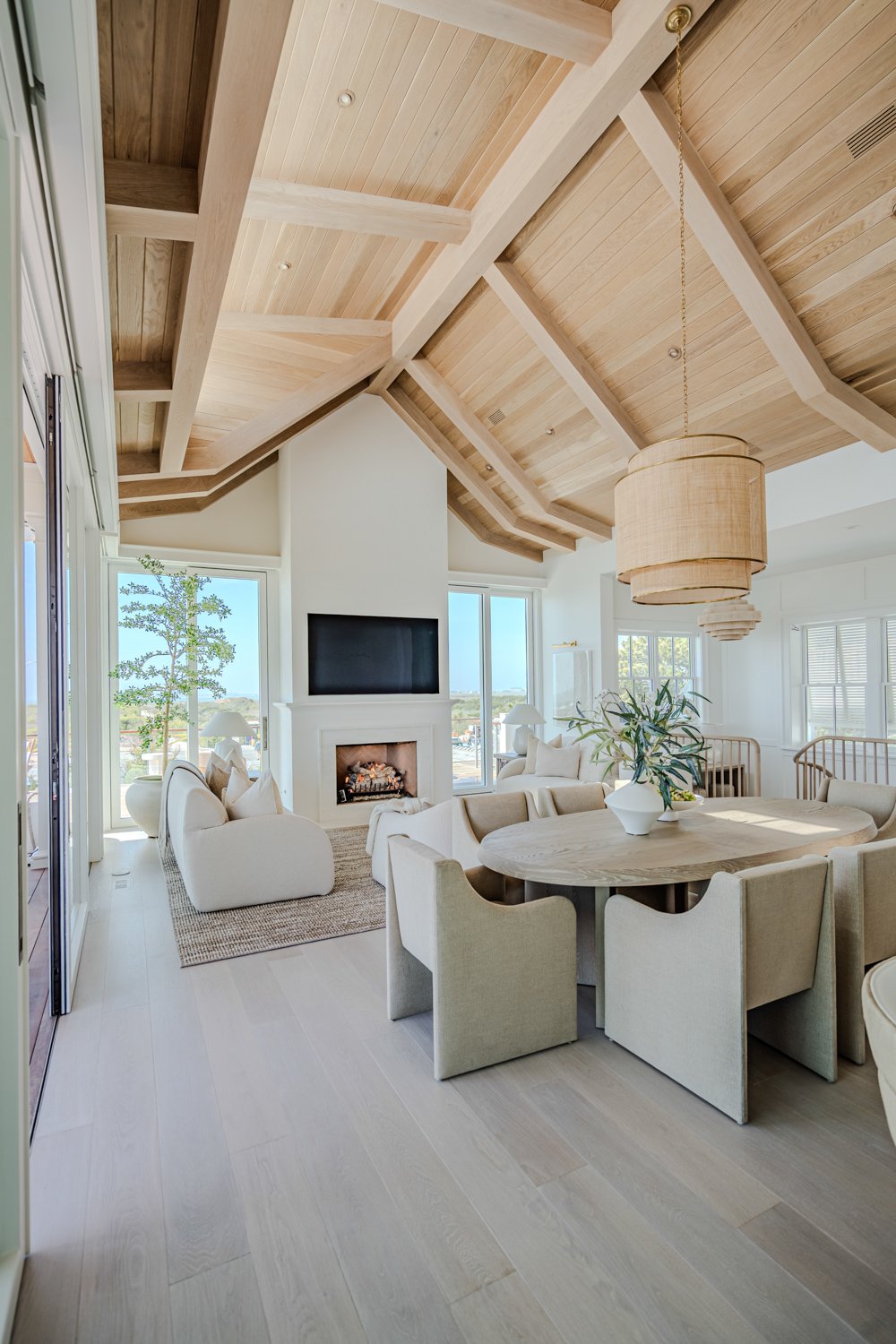
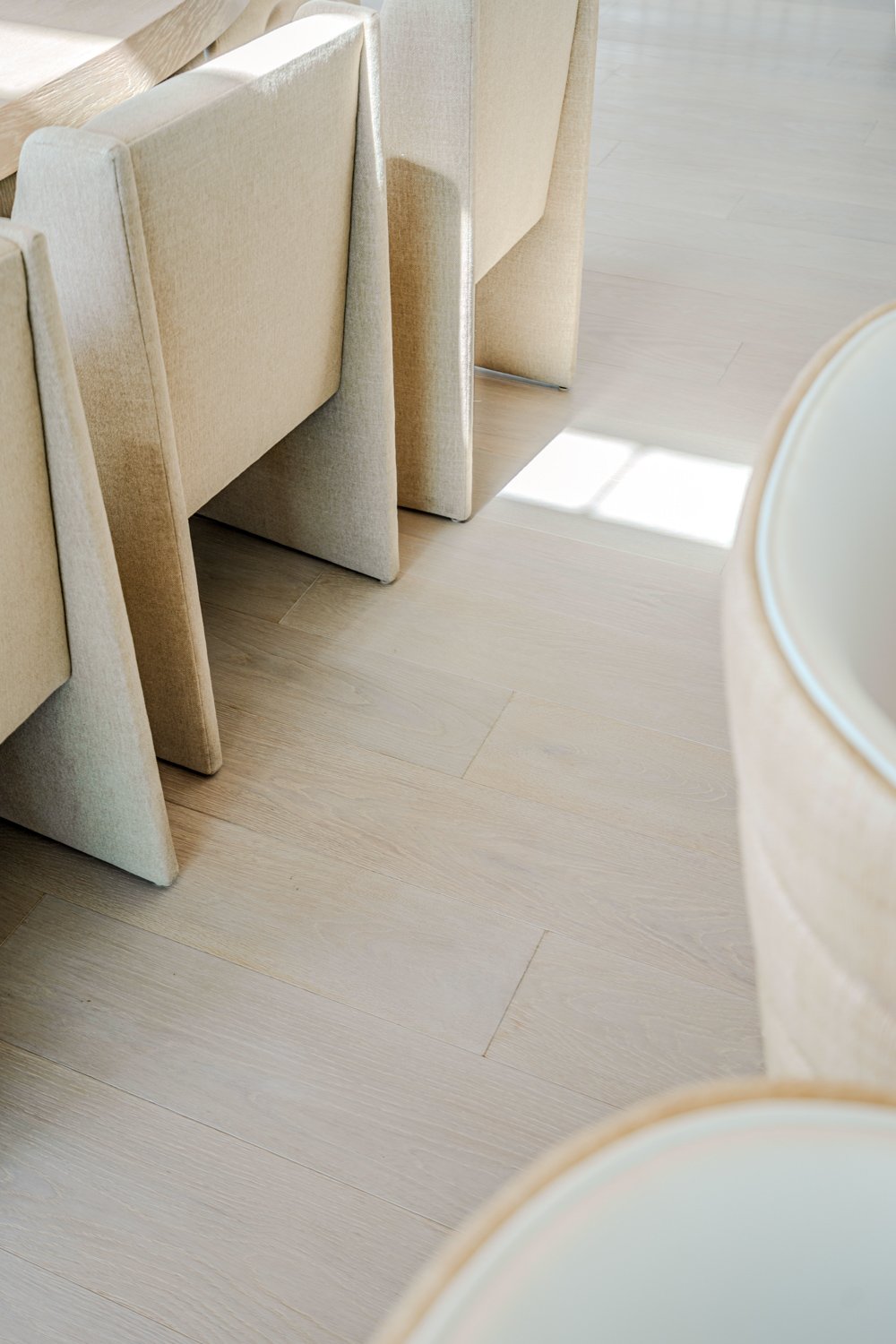
Design Integration
1) Visual and functional harmony of flooring with the broader design;
2) Contribution to the overall building occupant experience
The European White Oak used in the inLove collection plays a pivotal role in establishing a thematic cohesion throughout the Stone Harbor, New Jersey beach house. Its pale, neutral tones reflect the natural light that pours in from expansive windows overlooking the water, creating an airy, open ambiance that blurs the boundary between indoors and out. The subtle grain and soft texture of the oak lends a quiet elegance, completing the masterful architecture of Asher Slaunwhite + Partners and accentuating the clean lines typical of modern waterside design.
This flooring choice enhances the serene interior palette tastefully created by Stephanie Kraus Designs while adding warmth and organic character. The light floor acts as a unifying canvas, allowing furnishings, art, and architectural features to stand out without visual clutter. It also visually expands the space, making rooms feel larger and more connected, emphasizing the invaluable feeling of home for the occupants.
Moreover, the reaction-stained European White Oak’s understated sophistication aligns beautifully with the ethos of contemporary design: simplicity, functionality, and a strong connection to nature. Its durability ensures it withstands the demands of waterside living, while its timeless appeal ensures the home remains stylish for years to come. In essence, this flooring is not just a sustainable surface—it’s a foundational element that ties together the architecture, the landscape, and the lifestyle of modern waterfront living.
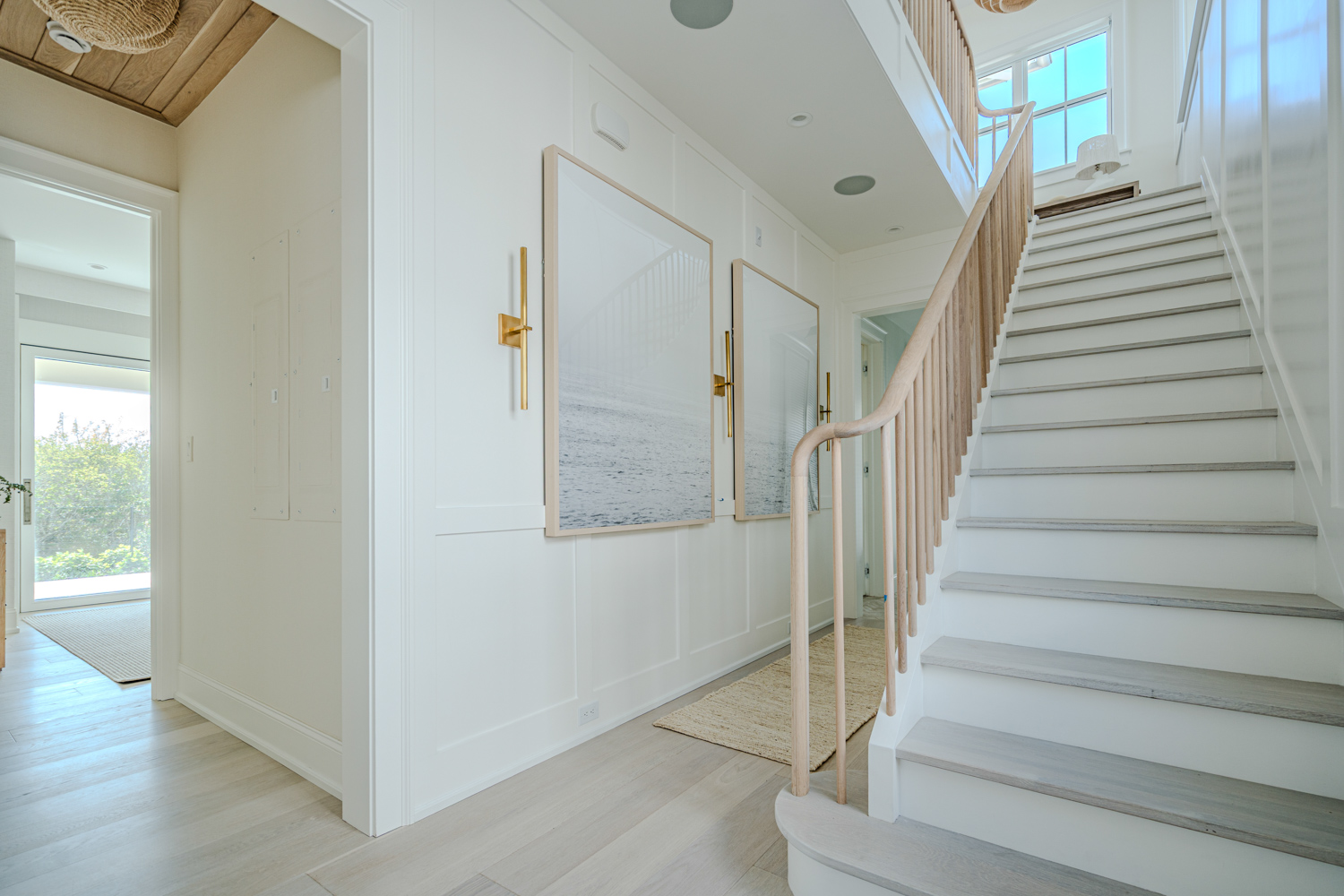
Compliance and Certification
Sustainability certification(s) of flooring and/or flooring contribution to building certification(s) and regulatory compliance
The flooring used throughout this Stone Harbor, New Jersey beach house, is FSC certified and qualifies for credits under the leading industry standards in green building initiatives. These include LEED v4.1, WELL Building Standard, Green Globes Certification, and the Living Building Challenge. It is compliant with the Lacey Act Regulations and meets the CDPH 01350 standard for volatile organic compound (VOC) emissions. PID Floors holds a MAS Certified Green Certificate of Compliance to attest to the latter, cementing the inLove floors as low-emitting materials that are applicable for LEED v4.1 credits in the Building Design and Construction (BD+C) as well as Interior Design and Construction (ID+C) categories.
Innovation
Introduction of novel sustainable flooring materials or construction processes and/or positive impact on society, surrounding environment, or local community
Product Used: FOREST HILLS, inLove Collection, Wide Plank Reaction-Stained European White Oak
Flooring stains, made from pigment or dye, saturate the wood with color. This saturation of color often masks or conceals the inherent qualities and unique beauty of the wood. To prevent this, inLove Collection products are finished using a proprietary process which uses molecular reactions rather than traditional pigments or dyes. Done by hand, our reaction staining process uses techniques developed over 300 years ago, before the advent of pigment stains or paints. PID Floors’ natural reaction-based stains and wood smoking processes highlight our innovation, chemically altering the physical structure of the wood on a molecular level to produce a desired color or effect.
In our reactive color process, natural chemicals or elements are applied or introduced to the wood via stain or smoke, which then react with the tannins, sugars, and minerals found inside wood cells. It is this chemical reaction inside the wood’s molecular structure that changes the color of the wood and creates the desired outcome. This reaction also makes the wood harder and denser, adding to its resilience and durability.
Visually, this reaction preserves the unique look of each piece of wood. Each plank of wood has a slightly different mineral content prior to being treated, resulting in a more varied, natural, and less uniform appearance than traditional staining. Our custom colors take about eight steps to produce, replicating the true chemical weathering process that wood experiences in nature. Our expertise with this novel technique uses a blend of natural oils and vinegars with a bona traffic finish, giving us the ability to produce a wide variety of beautiful effects and colors.
